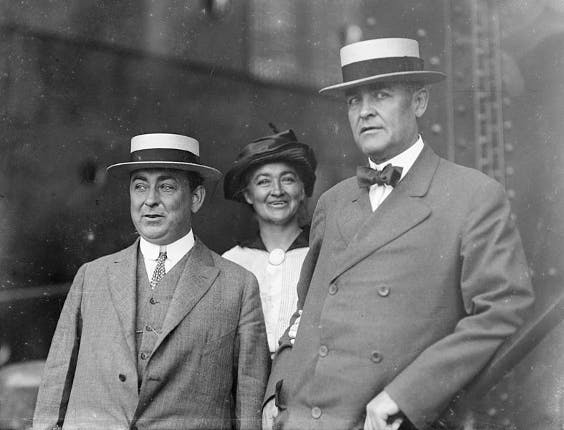Sullivan’s Follies, II: Can New York Require ‘Proper Cause’ To Exercise a Constitutional Right?
The latest challenge to New York’s principal handgun regulation — the Sullivan Law — pits two different philosophies over handgun permits, or a lack thereof, against each other.

The Supreme Court is expected to rule on the constitutionality of New York’s 111-year-old Sullivan Act — criticized as a de facto handgun ban — at some point before the end of this term.
A decision in favor of the Second Amendment would vindicate gun rights advocates, though others have concerns that expanding concealed carry might lead to a sudden increase in gun violence.
The resultant policies will depend on the details of the court’s ruling and how broadly the Nine do or do not expand the right to carry a firearm in public in New York.
The New York State Rifle and Pistol Association and New York State both presented arguments regarding the constitutionality of the law, the understanding of which depends on an understanding of the law.
The law falls under the “may issue” category of gun regulation, which means that the local government has considerable discretion in whom they issue permits to. It also means that the application of the law varies considerably across the state.
The New York State Rifle and Pistol Association contends that the law deprives citizens of their Second Amendment rights. The organization is petitioning the court “to resolve this critical constitutional impasse and reaffirm the citizens’ fundamental right to carry a handgun for self-defense.”
This is, in essence, the position that the New York Rifle and Pistol Association, represented by Paul Clement, took in court.
“New York likens its law to a restriction on weapons in sensitive places. But the difference between a sensitive place law and New York’s regime is fundamental,” Mr. Clement said.
The crux of the argument was that New Yorkers should not have to demonstrate a “proper cause” to exercise their rights under the Second Amendment.
The definition of a “proper cause” is decided by the local precinct, leading to unequal application of the law. Permits are often harder to obtain for those in metropolitan areas with high population densities.
This fact has led many to criticize the Sullivan Law as a de facto ban on the possession and carrying of firearms in New York.
“Carrying a firearm outside the home is a fundamental constitutional right. It is not some extraordinary action that requires an extraordinary demonstration of need,” Mr. Clement said.
New York State, represented by Solicitor General Barbara Underwood, disputes this assertion, pointing to the tradition of regulation of firearms in America.
In the early 1900s, “many states made good cause a requirement for a license to carry a concealed handgun while also prohibiting in some cases the open carrying of handguns,” Ms. Underwood said.
Specifically, New York focused on the regulation of firearms within populous areas.
“In total, from the founding era through the 20th Century, at least 20 states have at one time or another either prohibited all carrying of handguns in populous areas or limited it to those with good cause,” Ms. Underwood said.
She had a further point, which indicates the significance of the coming Supreme Court Decision:
“New York is not an outlier in the extent to which the state restricts the ability to carry firearms in public, and it’s not an outlier in asking a licensed applicant to show good cause for a carry license,” Ms. Underwood said.
Aside from the question of the Sullivan Law’s constitutionality, Ms. Underwood’s point underscores that millions of Americans stand to be affected by the decision, should the court rule that the “may issue” law infringes on New Yorkers’ Second Amendment rights.
One analysis published by Nation Public Radio estimates that some 80 million Americans could be affected by the decision, even though 43 states have less stringent gun regulation than New York.
This is due to the populous nature of states like New York and California, which maintain strict gun regulation, as do a handful of other states such as Massachusetts, Hawaii, and New Jersey.
The impact will depend on the Nine’s decision. Specifically whether to strike down the law in its entirety, modify the law, or uphold it.
Many expect the law to be either struck down or modified into some sort of “shall issue” law, which would mean that all applicants would receive a permit unless for some reason ineligible.
While it is impossible to say what the court will do, it is possible to examine what has happened in other states that have changed their gun regulations.
Gun control advocates point to states that have seen a rise in gun-related deaths following deregulation of handguns, whereas gun rights advocates point to other states that have loose regulation and low gun deaths, though these data are often disputed.
This debate will be the subject of the final part in The New York Sun’s series on the Sullivan Law.

